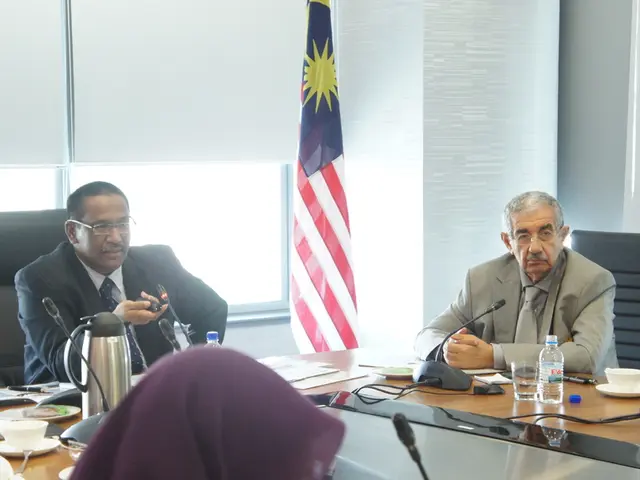Traveling with professional violinists: Crucial advice on secure transportation and broadcasting your travels digitally online
Professional violinists employ several key strategies to safely transport their instruments during travel, whether it's air travel, ground travel, or international trips.
### 1. Investing in High-Quality, Protective Cases
A sturdy, well-insulated violin case is essential. These cases often have climate control features and shock-absorbing padding to protect the instrument from temperature extremes and physical impacts. Some cases come with innovative carrying systems or new straps that enhance both security and comfort during transport. For musicians travelling frequently or internationally, investing in custom or flight-approved hard cases designed for durability is recommended.
### 2. Temperature and Environmental Precautions
Never leave the violin in a hot or cold vehicle, even briefly, as temperature fluctuations can severely damage the wood and varnish. During air travel or layovers in varied climates, ensure the case insulation is adequate to keep the violin at a stable temperature.
### 3. Handling During Air Travel
Whenever possible, violinists should carry their instrument as hand luggage to reduce the risk of damage from baggage handling. For check-in, using sturdy flight cases and proper labeling can help safeguard the instrument if checked. Many professionals obtain travel insurance for their instruments, which can cover damage or loss during flights.
### 4. Ground and Local Travel
Use compact travel violins (often smaller or with detachable/foldable parts) when frequent ground travel is involved, easing portability without sacrificing too much on playability. Keep the instrument in the case at all times during transit and avoid exposing it to direct sunlight or vibrations from rough roads.
### 5. Additional Precautions for International Travel
Verify carry-on policies with airlines in advance to avoid last-minute issues at the airport. Ensure all customs documentation for the instrument is in order to avoid delays. Where possible, travel with case locks and carry emergency maintenance kits for tuning or small repairs.
By combining these precautions—especially investing in high-quality cases, managing temperature exposure, and handling with care—professional violinists can effectively protect their valuable instruments throughout all stages of travel. U.S. law allows musical instruments as carry-on if they fit in overhead bins or under seats during air travel, but enforcement can vary. Always declare your violin at customs to avoid delays and carry proof of ownership. Most rail services, such as Amtrak or Eurostar, allow instruments as carry-on without extra fees. Crossing borders with instruments containing restricted materials, such as pernambuco bows or tortoise shell, requires CITES permits well in advance.
In addition, sharing travel experiences on social media platforms like Instagram or TikTok can humanize a violinist's craft, boost engagement, and follower growth. When travelling by car, use seatbelts to strap the case in place, preferably on the back seat away from direct sunlight. In trains, secure the case in overhead racks or dedicated luggage areas, and avoid peak hours to minimize jostling. In cases of disputes with gate agents, violinists can politely reference airline policies or federal regulations. Great Violin Cases advises against using soft gig bags for air travel due to minimal protection. Before any trip, violinists should loosen the strings slightly, remove detachable items, use a humidifier, and obtain specialized insurance for valuable or antique instruments. Shoulder straps on cases make carrying easier, freeing hands for balance during walking long distances.
- To supplement their professional lifestyle, some violinists maintain an active presence on social media platforms like Instagram or TikTok, sharing travel experiences and humanizing their craft.
- When participating in travel, particularly air travel, violinists can enhance their music's entertainment value by incorporating a variety of music genres into their performances, providing a diverse mix of soundtracks to accompany their journeys.
- During their travels, violinists can broaden their experiences by engaging with local communities, attending performances, or even collaborating with musicians from different cultural backgrounds, enriching their musical repertoire and lifestyle.




